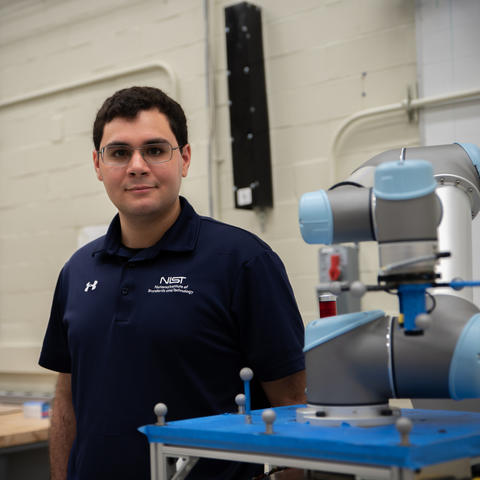
In manufacturing plants, robotic arms are typically fastened down in one spot, repeating a single task over and over. While stationary machines are already saving workers from repetitive, backbreaking labor, there’s even more to be gained if they can leave the workstation.
Robots capable of interacting with and navigating their surroundings, known as mobile manipulators, can fulfill multiple roles in one factory and work on manufactured parts of different shapes and sizes. For example, a robot on the move can place a robotic arm at a station and, while the arm works, haul boxes from one place to the next.
The mobility provided by such robots offers an opportunity for greater flexibility and efficiency but also greater potential for error.
For a mobile manipulator to do its job, it needs to be good at positioning and orienting itself in its environment, but slippery or rough floors, stray boxes and other unexpected obstacles and conditions could throw it off. There are potential technological solutions out there, and at NIST, the mission of computer scientist Omar Aboul-Enein (pictured here) and his colleagues is to figure out how to put them to the test.
The researchers mounted robot arms to different kinds of mobile bases and ran the coupled bots through various trials. Their latest experiment has robots mimic a peg-in-hole assembly task, such as inserting rivets into an aircraft wing, at a reconfigurable measurement tool (the table shown here) that mimics a workpiece. The arms attempt to line up a sensor over reflective targets that line a curved track while the mobile base either parks in place or continuously moves along the table.
The mock workpiece’s height and angle can be adjusted to represent a variety of manufacturing situations. And with it, robot developers and consumers can answer some critical questions:
- Can the arm repeatedly position itself accurately?
- How long does it take to perform a manufacturing task?
- How can external factors, such as environmental conditions, affect performance?
The answers could help robot manufacturers during research and development and robot users as a final check before sending the bot off to work.
Follow us on social media for more like this from all across NIST!

